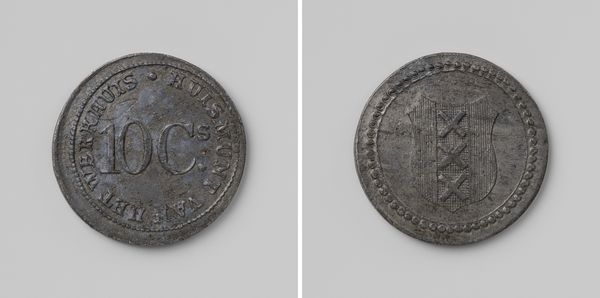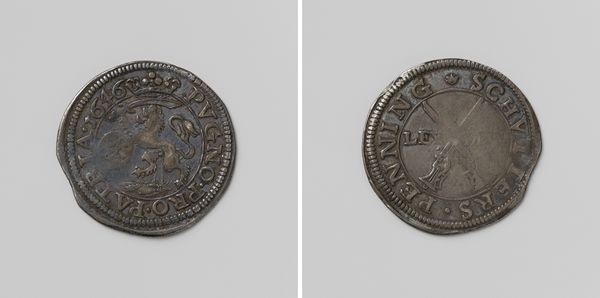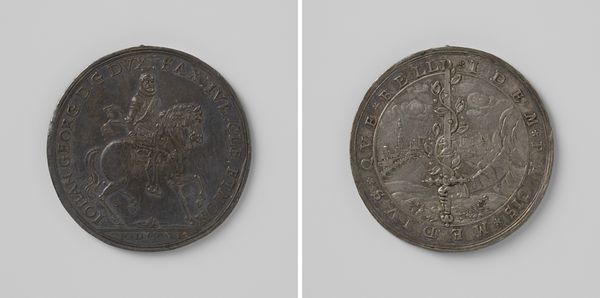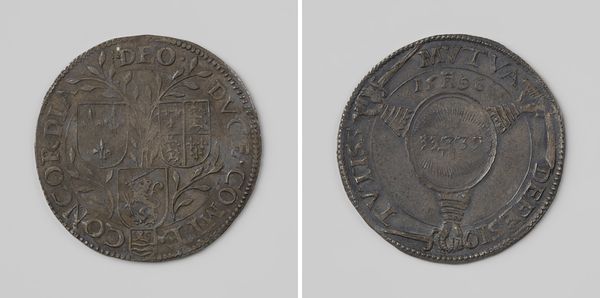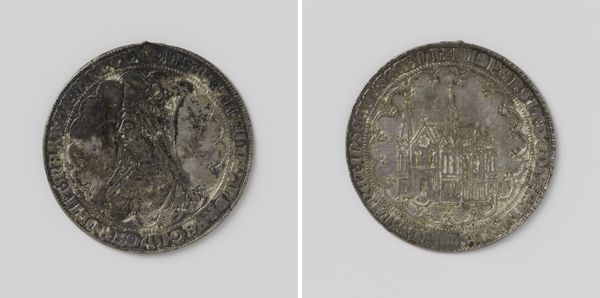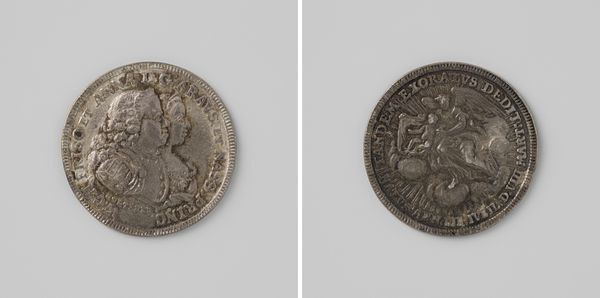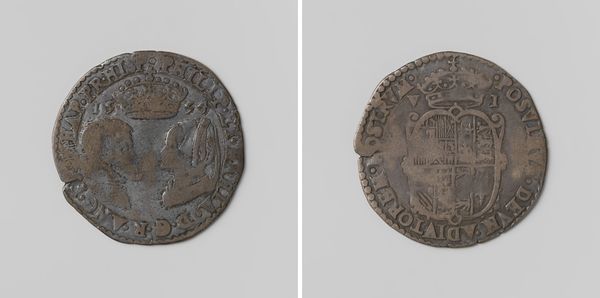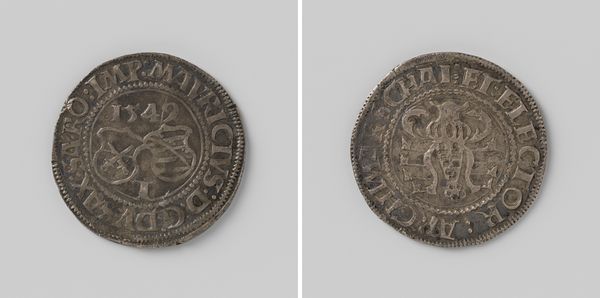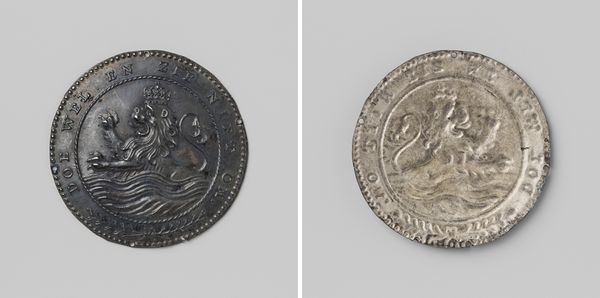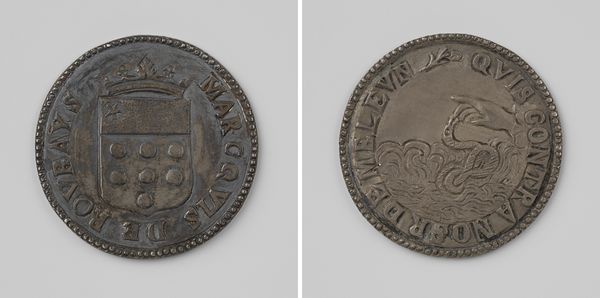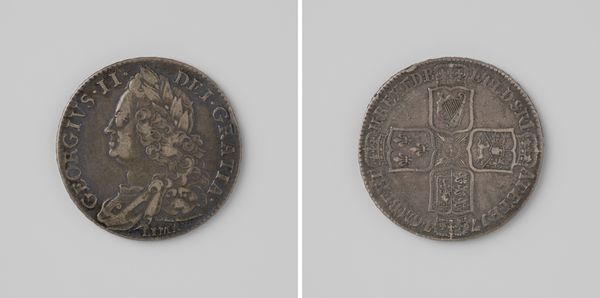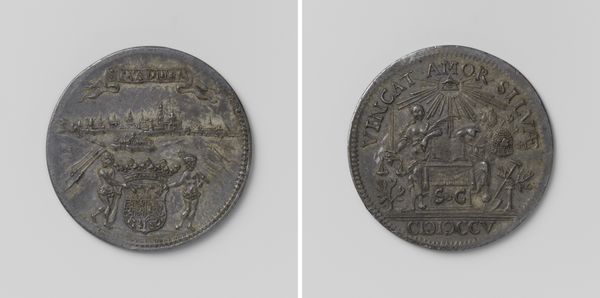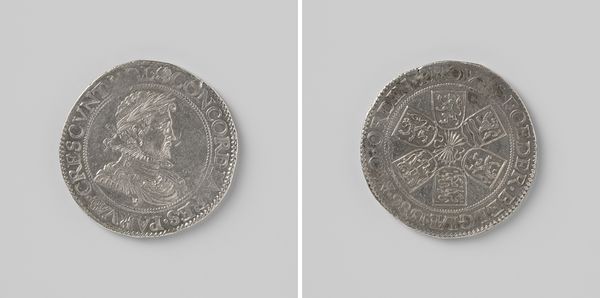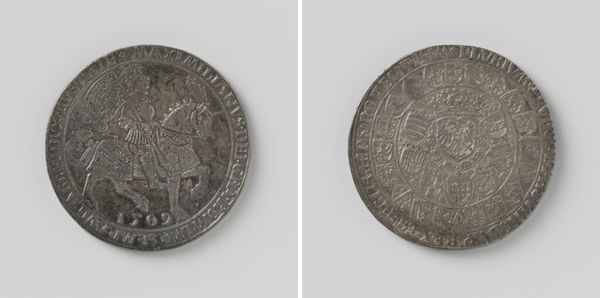
Shilling; twaalf pence, noodmunt van Karel I, koning van Engeland te Ormond geslagen van het door de ingezetenen opgebrachte zilver 1643
0:00
0:00
print, metal, engraving
#
portrait
#
medieval
#
baroque
# print
#
metal
#
sculpture
#
coin
#
engraving
Dimensions: diameter 2.7 cm, weight 5.68 gr
Copyright: Rijks Museum: Open Domain
This silver shilling, a coin made in Ormond during the reign of Charles I of England, is a potent emblem of authority and necessity. The crown, prominently displayed, has for centuries signified divine right and monarchical power. Its presence on this coin speaks to the King's claim over his realm, a visual assertion of sovereignty during times of conflict. But let us delve deeper. The crown's symbolism extends far beyond mere political dominion. Think of the ancient Roman emperors, who wore laurel wreaths, or the Egyptian pharaohs, adorned with the pschent. The desire to visually represent power is an archetype, deeply embedded in our collective consciousness. Yet, the very material of this coin, silver, reminds us of the tangible, earthly demands of governance. Herein lies the tension: the ideal of divine authority versus the pressing need for material resources. This coin, therefore, is not just a symbol of power but a poignant reminder of the earthly constraints that even kings must face.
Comments
No comments
Be the first to comment and join the conversation on the ultimate creative platform.
